In this post, I’m going to show you how to start the shift to a learner centered model based on what worked with my team in my district and my experience as a superintendent.
You’ll see how these steps below are simple, but systemic and truly sustainable in order to lead to a transformational shift in your school or district.
These steps not only worked to help my entire staff shift to a learner centered model, but sustain it.
Step #1: Start with the Commitments of the Team
Let’s start with our team and their commitments.
Peter Drucker once said that culture eats strategy for breakfast. The idea here is when we’re looking at our work and thinking about how we can shift to a learner centered model, is to look at what our current culture is and how we operate.
It’s not just a flip of the switch or a turn of the page in order to do this work. It’s really about working with those within our team to really understand the commitment that is needed to do this work. And at the same time, the relentless pursuit of strategies that work and that don’t work so we can make those better each day.
Build a Collaborative Culture
So if culture eats strategy for breakfast, one of our first goals is to really think about our team.
Here at my school, we’ve really talked about our team and we know that to build a collaborative culture, we need the group to move the group.
When we talk about collaboration, it’s a word that we throw around a lot. In the classroom we want students to collaborate, as a staff, we want to have a collaborative culture.
We also know that a collaborative culture is one of the top factors in helping to focus schools and move forward. If we know that we need the group to move the group, we need to not only define what we mean by collaborative culture but make that definition actionable.
Phase 1:
In the process to define and make our work actionable, our team first defined collaborative culture as simply as we could. It really came down to two things: mindset and learning.
First, we came to the decision that collaborative culture is really about our mindset. We see problems as an opportunity to grow and we see it really as an opportunity for learning.
We also defined our collaborative culture as the way we do things together and thinking about the idea of collective capacity. I’ll talk more on this later about how we take action collaboratively and how we make sure the whole team is on board in order to have the impact that we want.
My team and I also talked about collaboration by design. Really diving into the idea of putting in structures that support collaborative work.
Once we defined what collaborative culture is to us and our team, the next step was to develop this culture. This is extremely important, not only with our staff but also with our teachers and their students.
Phase 2:
Moving forward with our shared definition, we came up with some themes.
These themes are really our team commitments for the 2021-2022 school year.
Version 1.0
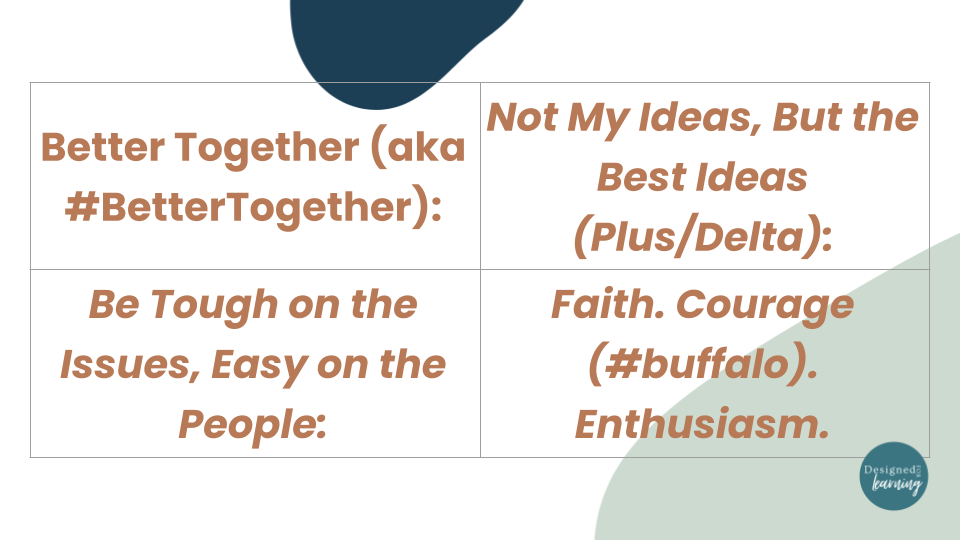
Version 2.0
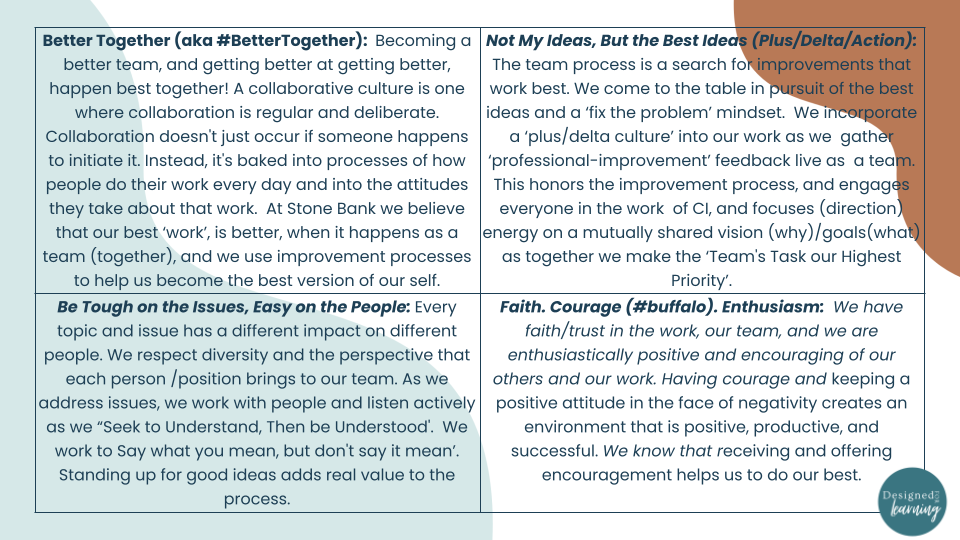
These concepts look simple, but they’re really grounded in us baking into the process of what collaborative culture looks like and defining this for our team.
The images above show the process of refining our commitments from statements to a much longer definition.
The idea here is to really strip this apart.
Better Together is focused on being intentional about what it looks like to do our best work and the idea of what does a culture of continuous improvement look like. How does everyone need to act in order to have continuous improvement and what is everyone’s role in that process?
Create a Plus/Delta Culture
As we shift to not my ideas, but the best ideas, our first version of this was about plus/delta. Making sure people could share what worked and what needs work. Whether it’s families or our staff.
What we found was, a lot of the feedback ended up being judgmental instead of developmental. Then, all of a sudden it was left on our plate for us as leaders to take action with it. Rather than what we really wanted.
What we really wanted was developmental feedback and most importantly was to define what our action steps would be. I will get to these action steps later in the post.
Be Tough on Issues and Easy on People
Another thing we needed our team to understand about this piece was that we respect each other so we’re going to be tough on issues and easy on people. We were really going to invest in each other and seek to understand and then be understood.
We were really trying to get to a spot where we were able to have tough conversations about what needs to happen to shift to a learner centered model.
We recognized an instructional paradigm was happening.
Schedules and bells were running our schools rather than student learning and experiences looked a little more educator driven than learner-driven.
Those are some issues that we needed to address if we want to truly become learner centered.
In order to get there, we were going to have to cross the threshold on teacher practices and classrooms. We needed to look at what leadership had done and was currently doing. We also needed to look at our training, and even some of our mindsets.
While this can feel like an attack on people, what we really understand is this is our system talking to us.
Any time we want to blame a group of students or educators for a problem, generally, it’s the system that we want to be looking at. This is really the goal…to shift the system.
I started with team commitments because we truly do need the group to move the group. This image below, especially the last box below, has helped to shape a lot of storylines.
When we get into sharing practice later on, I’ll share how we put this to work for our instructional strategy practice and how it’s really helped to shift our culture to a learner centered environment.
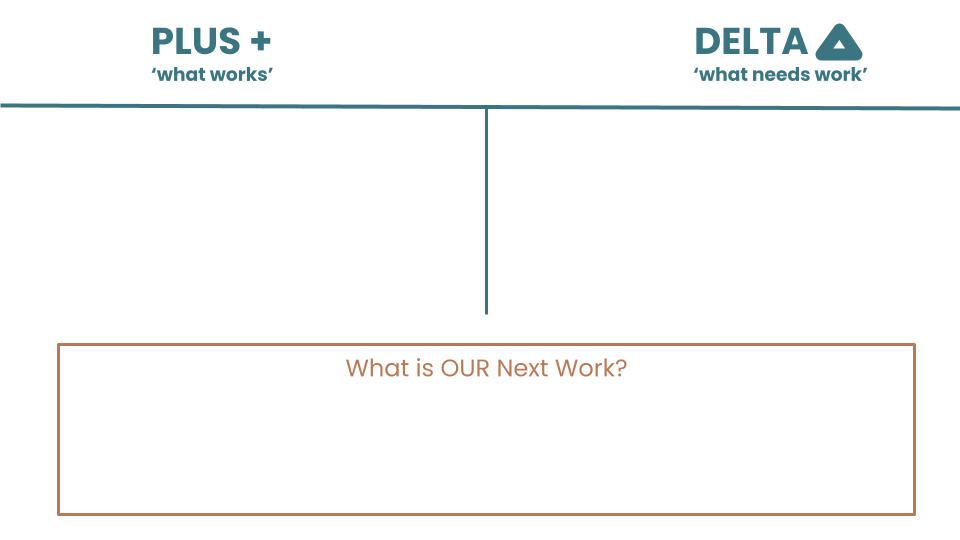
We want to make sure that we do our best to define what we mean by learner centered design and most importantly, find out where we are today and what we can do tomorrow. This way we start to live our simple but systemic mindset of:
We’re going to have to chip away at this one strategy and one approach at a time. Making it simple enough to do tomorrow but at the same time understanding that our work is really going to be about making sure that this work we invest in today, becomes a systemic process for tomorrow.
Step 2: Create Educated and Empowered Learners
Let’s dive into the learner piece and really understand why a learner centered model is so powerful and what you can do.
In every email that I send, the bottom line reads: “Educating and empowering all learners for their future.” Focusing on the word “and” here because our goal is to make sure students are educated as they leave our school, but also empowered.
How does this play out in our school?
Below is an image containing 6 questions and these questions often play into our work or daily lives.
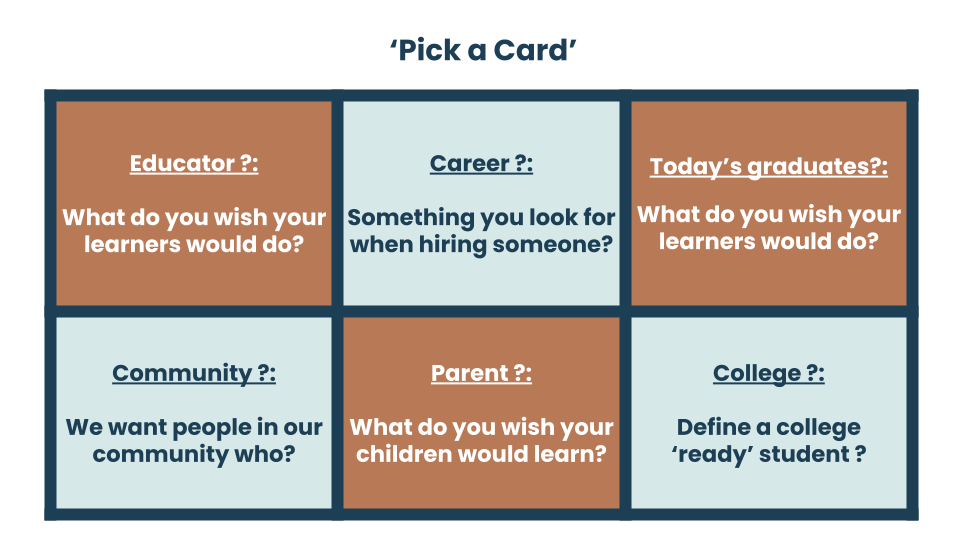
These 6 questions, no matter who ask I them to and when I ask them, have resulted in very similar answers. What I mean is I’ll start to hear similar words being used like collaborator, grit, problem solver, perseverance, and teamwork.
What’s interesting is I’ve done this with teachers, parents, community leaders, college admission advisors, and every time almost 90% or more of the answers follow this trend.
They end up defining the powerful learner and not necessarily defining the learning. I often don’t hear about sixth-grade science standards or reaching a certain score or GPA.
I often hear about the foundation of what allows students to do the learning. Time and time again those learner centered qualities of problem solver, perseverance, active listener, always rise to the top.
So often we hear about the rankings of a school’s score, achievement levels, standards, and especially right now, learning loss.
Really what you hear when you ask the most simple question is the investment in nurturing a powerful learner while they’re becoming a proficient student.
A lot of our work is based on breaking those words down and becoming as intentional about defining collaboration, problem solving and perseverance as we are about having kids understand the math and science standards.
The Four Dimensions of a Learner
As we shift to the learner and break down these skills, we’re really focusing on those four dimensions of a learner.

So when you think about the 6 questions we just discussed and categorize them into the two groups of learning vs. the learner, they usually fall into one of the four categories listed above.
I share this because it’s not about taking the knowledge away, but it’s about designing powerful learner centered experiences that develop those skills, while they’re learning.
Creating a Portrait of a Graduate
Here at our school, we took those words and we pulled together parents, students, and staff members, and over the course of a year, we defined our portrait of a graduate.

Many schools have these, but the purpose of this is to not only talk about what they’re going to learn, but the idea is to talk about the experience and powerful learning experiences.
So, what we heard in doing this were the same four themes listed above: world class standards, strong character, powerful learner, and world class skills. We broke them down into four main areas and eight sub-areas.
There can be more here or there can be less and it can be customized to your school or district. The main purpose is to go through the process and define what success looks like in your school.
Where you’re more than a score and more importantly this becomes a north star guiding the instructional design of all classrooms.
Step 3: Focus on O.A.R. – Make the Shift to Learner Centered
Now it’s time to see how this is incorporated into instructional design.
We’re going to talk about shifting the O.A.R., which stands for Ownership, Agency, and Responsibility.
This is really thinking about who is moving the learning forward. Is it the leader, is the teacher, is it the student, is it all three?
Thinking about shifting the O.A.R., we get the opportunity to explore who has the O.A.R in their hands. It’s not a free for all of throwing the O.A.R. into the learners hands and hoping they can figure it out.
It’s about being intentional. It goes back to defining what skills you want them to have and taking the time to develop it while they’re learning.
Strategies to Shift the O.A.R.
When we talk about shifting the O.A.R., the same concept can apply to your staff coming in and sitting in staff meetings or your students sitting in classrooms.
As a leader, really understanding how we can shift this experience and shift the role of the learner, of the educator, and yourself as a leader is key. The question needs to be asked: “how we can set the tone for having greater ownership of the work, greater agency, and greater responsibility?”
I mentioned before that our goal is for all students to be educated and empowered. When thinking about making the shift, below is an image of strategies that truly shift the O.A.R..
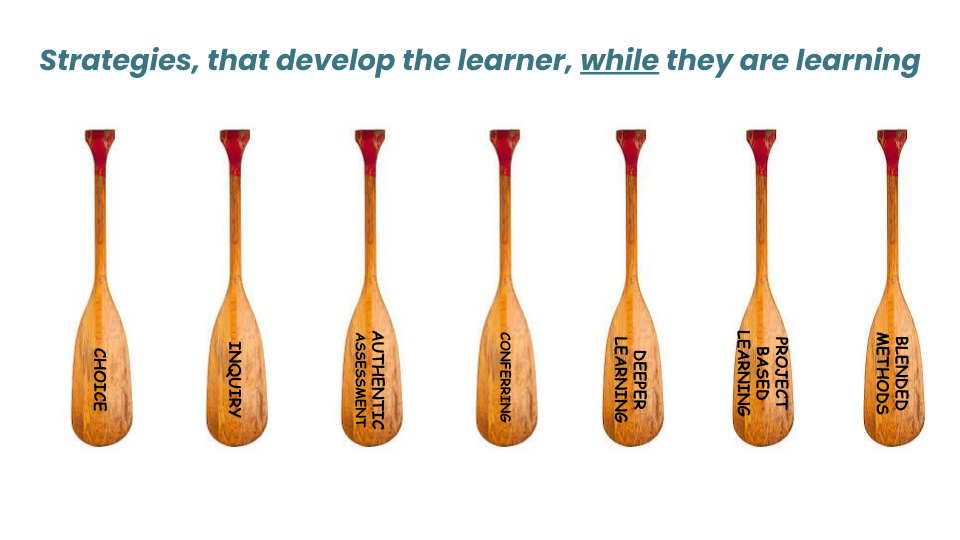
The strategies shown above range from choice and inquire to blended methods. Whatever those strategies might be, you’re really thinking about teaching and leadership strategies that shift the learner’s role into a more active one rather than a passive one.
This then shifts the student’s role into more of a coach or a guide and the director helps to build those skills. So strategies that develop the learner while they are learning. In thinking about what role you want, it’s not a complete shift that happens overnight, but it’s about being intentional and developing it.
We are trying to shift the O.A.R. on ownership for collective action. Not by the principal, not by the leader in their office alone, not by a group at the next meeting, but really together in the next meeting that we all walk into.
Questions to Ask During the Collaborative Process
We briefly touched on the O.A.R.’s of instructional strategies and they come to life with the collaborative processes. These are questions that we ask in this process.
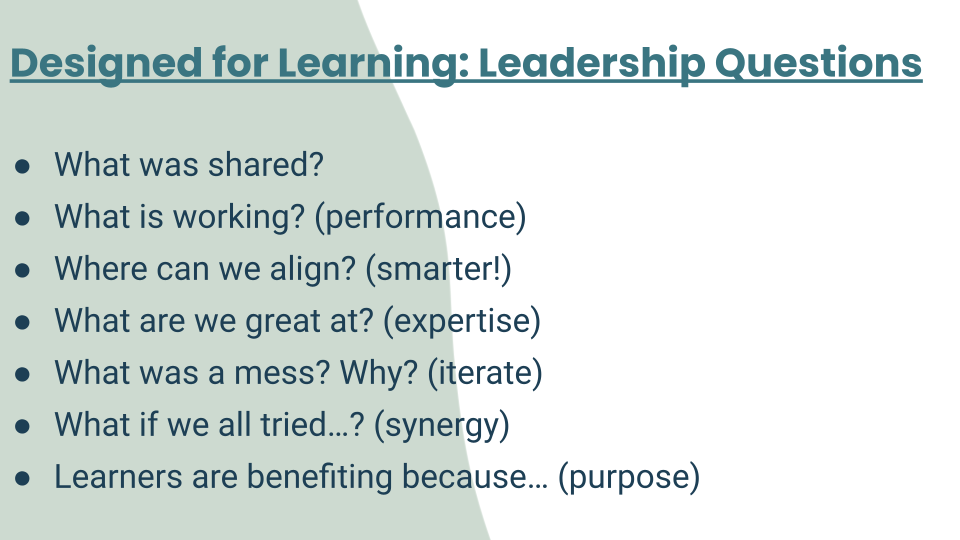
Our goal is to build a collaborative culture that is understanding the learner and more importantly, shifting the O.A.R. These questions are really driven by one purpose, which is the learners are benefitting because…
In our attempt to shift to a learner centered model, we have to keep asking ourselves how are our learners benefitting. If we can relate this back to our learners being educated and empowered or our profile of a graduate and the skills they are learning, we get a chance to share that.
If we can equate that back to teachers designing powerful learning experiences for kids, we get a chance to share that too.
So, let’s say a math teacher shares what they’ve done to empower students or make them better at self-advocating and self-assessing. By sharing what worked and what needs work, we can collectively start to talk about what our next work is.
This is work that we’re doing in my district as a part of a collaborative coaching cycle as well as something that we’re trying to do as a part of our staff meetings.
We start to have our storyline be one of being tough on issues and easy on people, but really we are starting to develop and nurture powerful learners as they are becoming proficient students.
What are the Benefits and Barriers in Shifting to a Learner Centered Model?
The last piece is to really think about what the benefits and barriers are that we’ve created for ourselves in our minds as well as what is created in our school.
When it comes to focusing on benefits and barriers, the key is to look at what is going to allow us to help shift the O.A.R. toward a more learner centered model. At school, the benefits and the barriers can be something like time, money, training, mindsets, and certain practices.
This summer, in each meeting we’ve asked ourselves some key questions centered around the topics outlined in the image below that center all around leading by design.
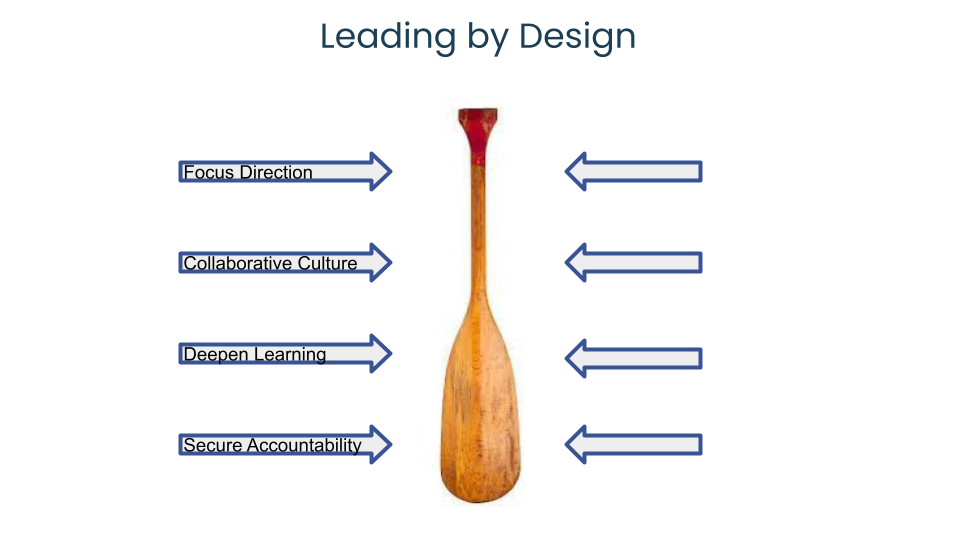
When it comes to shifting the O.A.R and shifting to a learner centered model, our real goal is about empowering and educating learners.
So we ask ourselves do our teachers and our leadership team have a clear and focused direction?
We talk about collaborative culture, and again what’s working, what needs work and what is our next work. We talk about deepening learning and sharing the impact that we’re having on our own culture and lastly, about our own accountability.
This helps us to have an open collaborative culture where we’re all truly moving the shift to a learner centered model forward.
Step 4: Shift Thinking and Design to Become Learner Centered
In this last section, I’m going to focus on the double S curve and how you can shift thinking and design experiences to become learner centered.
So my question to you is what structures do you currently have in place that might be inhibiting students from learning powerful learner skills because we’re too busy trying to instruct them on the learning?
What are the structures we might have in place that might be too focused on the learning and have negated the skills that students need to be a powerful learners?
We do it all the time. Providing students with a writing assignment, but now allowing them time to self-assess, get feedback, find their own resources, and advocate for themselves. Then just getting a grade from a teacher limits their ability to do that.
Providing students with homework assignments or a number of problems they need to complete which takes them away from what we really want them to do. We want students to get to a spot where they can self-assess, whether they understand the concept and more importantly if they can’t, then figure out why and start to advocate for themselves.
This goes back to the O.A.R. and having students take ownership, agency, and responsibility.
When I think about pushing pause on instructional design, a quote comes to mind.
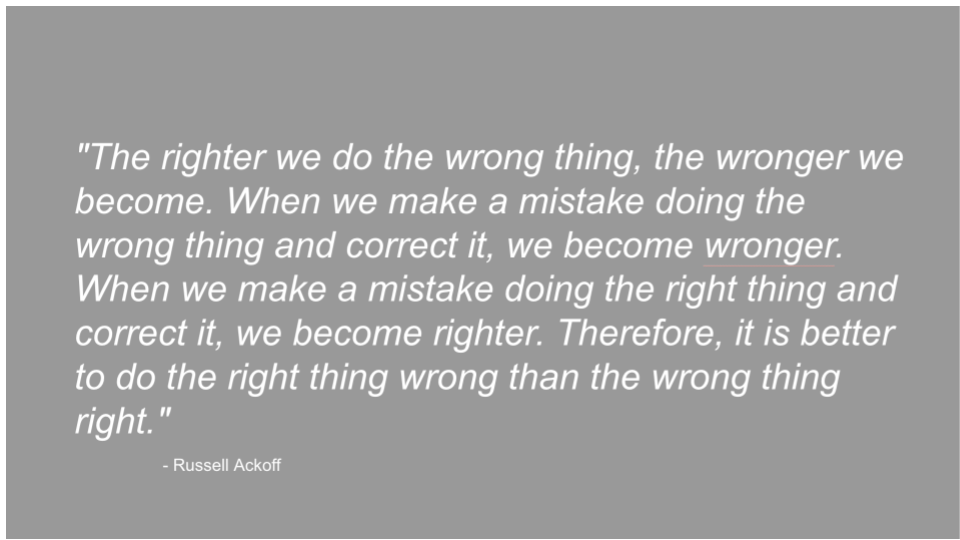
This quote represents the journey of a shift to a learner centered model in a lot of ways.
Oftentimes, we are so stuck in an instructional design model we don’t get an opportunity to really start to take this apart and realize that we are going to have mistakes along the way.
Taking the chance and turning a writing assignment over to a learner or part of a lesson and putting the O.A.R. in the hands of the students is a little bit of a risk. It can feel like we’re doing some things wrong along the way, but at the same time, it’s the right work.
What we have to do now is make a commitment to that happening.
Leading the Shift
The idea in the image below is about really leading the shift. If you’re going to design for learning, then you have to take where you are today, and realize that there had to be some transformed thinking.
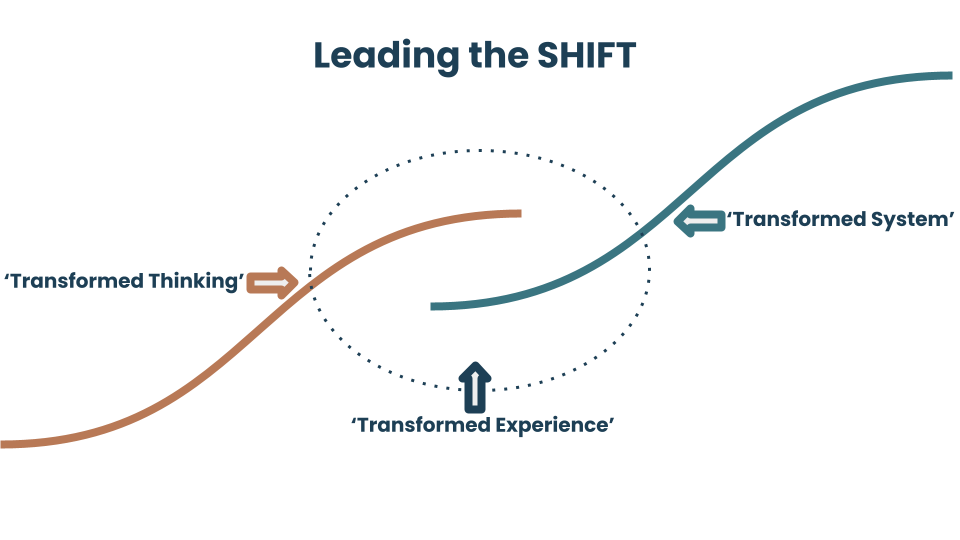
When it comes to being designed for learning rather than designed for instruction, we have to understand the context of this moment right here in the dotted circle above.
This is where the disruption is going to occur and the shift is going to be a little bit messy. The good news is that many of the practices (student voice, choice, PBL, etc.) we’ve had that have been effective for years, are truly learner centered.
The concept is to make those practices the main thing and a part of the recipe so it’s baked in. Really a piece of a value system that is not about the grades and not just about the learning. Rather, it’s truly about nurturing powerful learning experiences that are designed for learning.
Again, understanding your staff’s current thinking and taking time to transform it is vital. Also, understanding that the new experience might not look as efficient in the beginning as the old model, but ultimately it’s going to be more effective.
The Learner Centered System: Schedules, Keys, and Class Lists
The last step in this section is about being really clear and defining what that learner system is going to look like.
This idea comes down to schedules, keys, and class lists. Oftentimes the instructional paradigm is based on designing schedules for teachers rather than learners.
We just launched our schedule this week and we asked ourselves, “how does this schedule have a chance for customized, local solutions or some timing?” Yes, we still live in an instructional paradigm, but to shift to a learner centered model, we’ve got to shift mindsets.
Keys represent which classrooms you can be in, but more importantly, what rooms can’t students get in. How can we provide students opportunities and projects and tools to get in labs to collaborate?
Lastly, class lists. A lot of these are instructionally designed rather than learning designed as well. Give your staff the opportunity to break apart the structures of their school to really make sure that it is truly designed for learning.
Our goal at my school this year is about educating and empowering all learners for their future. We are focused on educating a high level of learning and on empowering a high level of the role of the learner.
All means all and really thinking about their future as different from ours.
What we know is their future is going to depend on students having a sense of ownership, agency, and responsibility. They’re powerful skills combined with a disposition to believe they can take on anything.
This is the work that we’ve been engaging in of transforming our own thinking for our parents, our board, our community.
Designing experiences where students develop these skills and ultimately, keeping in mind that it takes time. We’re building that transformed system, one class at a time, one grade level at a time.
Next Steps: Taking Action
I mentioned early on keeping this simple but systemic. What I covered in this post are simple enough ideas that can shift the O.A.R. in tomorrow’s lesson, whether for 5 or 10 minutes, but we define it and we’re systemic about why we’re doing this and where we’re going.
In the end, our work always falls down to the piece of what works, what needs work, and what is our next work. So the last step in starting this shift is to start to put this into action in your school. I like to use the rule of 3 and we know that taking collective action is going to move the needle, so ask yourself:
- What are you going to do in the next 3 hours in terms of what you’ve learned and what are next steps?
- What are you going to do in the next 3 days with kids inside of your classroom or coaching in leadership support?
- What are you going to do in the next 3 weeks that you can celebrate overtime when you come back together?
Together this becomes a cycle of continuous improvement. Our improvement is based on shifting to a learner centered ecosystem and most importantly thinking about doing that through the lens of designing every experience for learning.
Learn More:
- Preview a Few Designed for Learning Signature Workshops
- Free Workshop – A Leadership Lens: Making the SHIFT Toward a Learner Centered Ecosystem
- Looking for support in the shift to a learner centered model? Book a free call with us to learn how we can customize our support to fit your needs and goals.
**This session was adapted from a live workshop with Ryan Krohn**

Superintendent at Stone Bank School District
Leader Centered Consultant
Learner